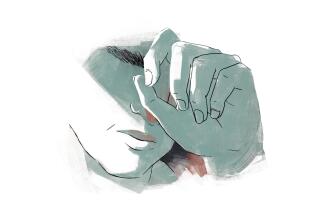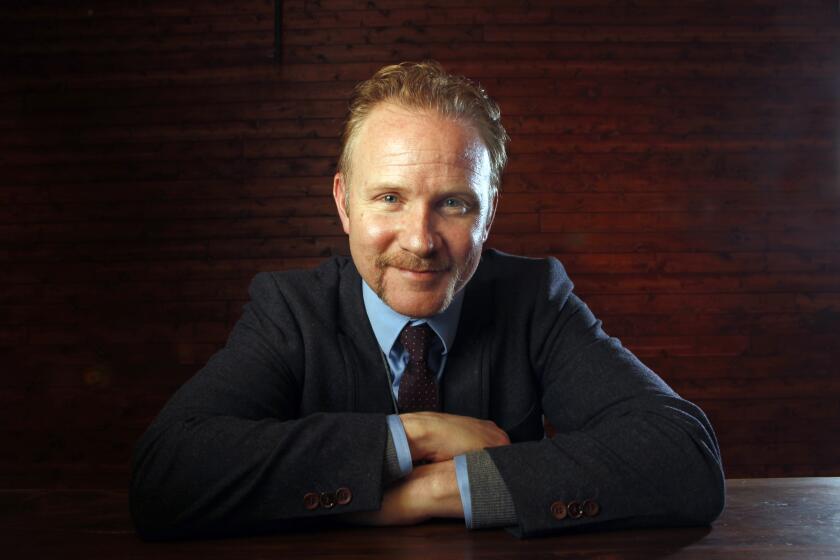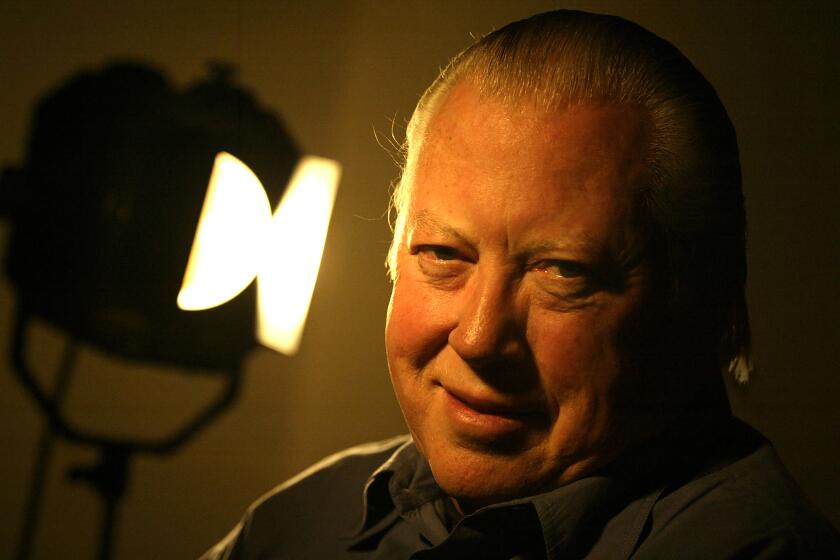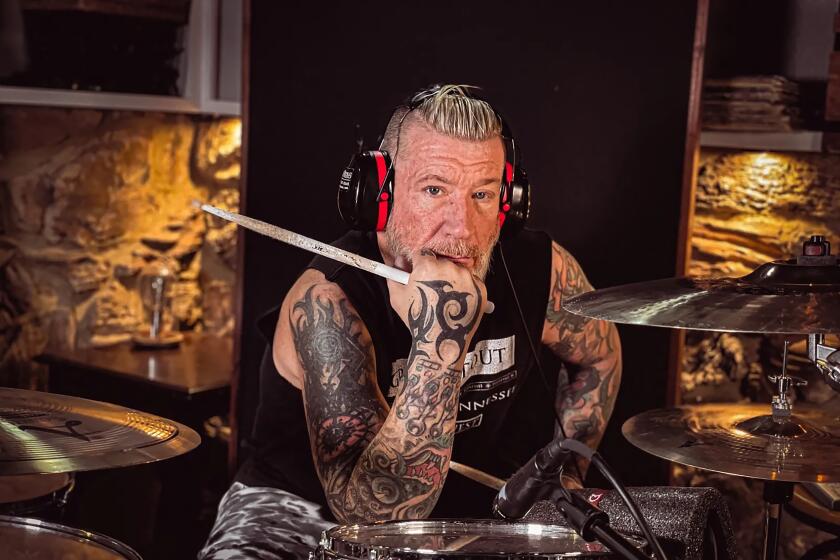Norman Farberow dies at 97; psychologist was pioneer in suicide prevention
Psychologist Norman Farberow never sought the limelight, but he didn’t shy away from it either.
When asked by the Los Angeles city coroner in 1962 to help determine whether the death of a 36-year-old actress from acute barbiturate poisoning was an accident, he agreed. Weeks later, he met with the media to announce that Marilyn Monroe’s death was “a probable suicide.”
Farberow was well-versed in the subtleties of the human mind in distress. Working out of an abandoned tuberculosis hospital near downtown Los Angeles, he co-founded the first suicide prevention center in the country and opened up a field of psychology that had gone largely unnoticed.
Farberow died Thursday at the Ronald Reagan UCLA Medical Center, according to his daughter, Hilary Farberow-Stuart, who noted that it was World Suicide Prevention Day. Farberow had fallen a week earlier in his West Los Angeles home. He was 97.
In the 1940s, suicide was, according to Farberow, “a long-neglected, taboo-encrusted social and personal phenomenon.” Most doctors and psychologists shunned its study, but he saw in its underlying causes — loneliness, isolation, depression — a moral imperative to help. The first step was to ease the cultural and social shame attached to its victims and their survivors.
“Farberow was a pioneer in helping to erase the stigma of suicide,” said psychologist Kita Curry, director of Didi Hirsch Mental Health Services in Culver City, which took on the suicide prevention center after it was nearly closed in 1997. “He understood that when people were considering suicide they were in terrible pain. Suicide hasn’t ceased to be a shame, but he changed the hearts and minds of millions of people around the world.”
Working well before the pharmaceutical treatment of mental disorders, Farberow helped develop crisis intervention strategies that often began with a conversation.
“It’s always impressive to me how far you can go in providing simple companionship to prevent a suicide, even if a person is just simply available to a telephone call,” he said in a videotaped address to the American Assn. of Suicidology Conference last year.
At his home or at the suicide prevention center, Farberow was never far from a telephone. With psychologist Edwin Shneidman and psychiatrist Robert Litman, Farberow laid out a protocol for nonjudgmental listening that has been picked up in crisis centers around the world. In Shneidman’s words, it all began with a question as simple as “How may I help you?”
If the prevalence of suicide in a city famed for its sunshine and salubrious lifestyle seemed incongruous, the contradiction never troubled Farberow. Born in Pittsburgh on Feb. 12, 1918, he arrived in Los Angeles after World War II at a time when Southern California was swelling with soldiers just home from combat. Farberow served in the war as an Air Force captain.
The Veterans Administration Hospital treated patients who were having difficulty with their reentry into civilian life, and as Farberow earned his doctorate from UCLA, he also spent time in a ward at the hospital reserved for suicidal patients. In their stories, he found his life work.
“My reason for exploring it was because ‘Aha, here is a scenario that very few people have been active in,’” he said. “There is a lot of room to look around in and maybe do something that other people would be involved with, interested in and come to look on you as a pioneer in.”
In the early 1950s, Farberow was named a deputy city coroner, which gave him access to the autopsy reports of the city’s dead. Poring over decades-old files, he and Shneidman began a careful analysis of suicide notes. Detecting ambivalence and doubt in the words that had been left behind, the two men began to consider how suicide might be prevented.
Their discovery of an ambivalence toward dying suggested that suicide is less a decision than a reaction. They believed that if they could learn what is being reacted to, they would have an opportunity to interrupt the suicidal impulse.
By Farberow’s estimate, about 10% of people who die by their own hands never intended to succeed. “Suicidal people are made, not born,” he said. “We can therefore unmake them as we learn more about the roots of self-destructive behavior.”
Together with Shneidman and Litman, Farberow developed the psychological autopsy, a series of interviews with family and close friends that could unravel the hidden threads of distress. The psychological autopsy led to their conclusions about Monroe’s death.
Their inquiries drew connections between suicide and its social and cultural roots among groups that at the time were marginalized in society: gay men, the obese, schizophrenics and the elderly. They believed that suicide was a public health problem, and healing could come as much from a conversation as from a pill.
The Suicide Prevention Center became a model for other clinics around the country. By 1963, its help line was available 24 hours a day, seven days a week, and its volunteers often went on to distinguished careers in the mental health field.
“The SPC was one of the top places I worked because of the degree of intellect,” said Bill Coggins, a friend and colleague of Farberow. “In our meetings, you had to fight to get a word in. There were brains galore, a rich fertilization of the intellect from a multiple disciplinary collection of scholars who were activists and service providers.”
A prolific writer throughout his life, Farberow co-wrote with Shneidman seminal books on suicide and suicide prevention, “Clues to Suicide” (1957) and “A Cry for Help” (1961). After Shneidman left the center in 1966, Farberow remained committed to it.
He helped start the International Assn. of Suicide Prevention. In 1965, he instituted training for law enforcement officers, who were in the best position to intervene in a crisis, and in 1981 he founded the Survivors After Suicide bereavement support group.
“He never stopped wanting to ease people’s pain and understand what brings people to the brink of such despair,” Curry said.
A modest clinician, by his daughter’s account, Farberow paid little attention to his honors. His wife, Pearl, whom he met on a blind date and married in 1947, had to talk him into mounting his awards on the wall of his study. She died in 2008.
Modesty, said Farberow-Stuart, was the key to his ability to listen.
“He was completely nonjudgmental,” she said. “He was able to be there, and instead of judging in any way, shape or form, he was able to be quiet and look at the situation and ask what was needed and what would help. That took an immense amount of intellectual curiosity, but that was his soul’s work.”
Besides his daughter, Farberow is survived by a son, David Farberow; three grandchildren; and three great-grandchildren.
More to Read
Start your day right
Sign up for Essential California for the L.A. Times biggest news, features and recommendations in your inbox six days a week.
You may occasionally receive promotional content from the Los Angeles Times.







